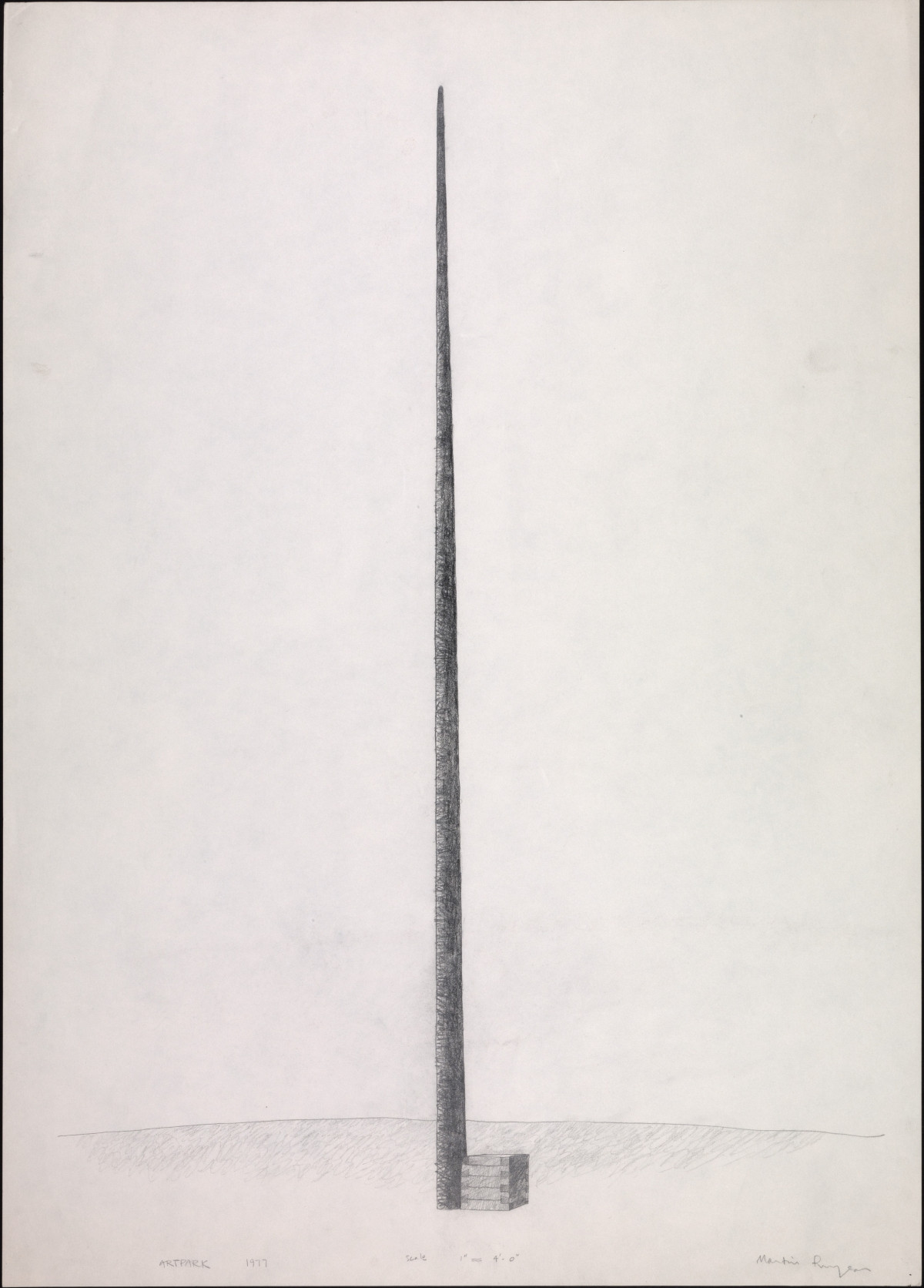
American, b. 1941
Box and Pole, 1977
Graphite on paper
29 x 21 in. (73.7 x 53.3 cm)
© Martin Puryear, courtesy Matthew Marks Gallery
In the summer of 1977 Puryear was invited to create a temporary site-specific work for Artpark, in western New York State, his first project to be exhibited outdoors. For this work, the artist made a wooden box by hand, from twelve-inch-by-twelve-inch hemlock timbers with dovetail corners, constructed over the course of a summer. Puryear paired this box—which he has described as “very much a woodworker’s expression”—with the longest utility pole he was able to find, onto which he spliced another pole, which tapered gradually upward until reaching a thin tip at nearly one hundred feet tall, noting, “I wanted to pierce the sky; I wanted to engage the space by pointing to the sky.”
While one preparatory drawing for Box and Pole conveys the modeled forms of the work’s two elements, the other is more diagrammatic, showing a cross-section of where the work intersects with the ground, and the point where the artist fused two segments of pole together. Written in Puryear’s own hand are notes about dimensions, types of wood, and construction details. Puryear even used hand-drawn wood grain to distinguish the box’s tongue-and-groove corners. Together, the two drawings illustrate the artist’s process of imagining a sculpture for a particular setting, and then working through the practical logistics of its construction.
After its temporary installation, Puryear recycled the wooden box, pairing it with an inverted wooden cone in an outdoor installation titled Equivalents at Wave Hill, in the Bronx, in 1979. For this work, he attempted to achieve the same cubic volume in two disparate geometric forms.
While one preparatory drawing for Box and Pole conveys the modeled forms of the work’s two elements, the other is more diagrammatic, showing a cross-section of where the work intersects with the ground, and the point where the artist fused two segments of pole together. Written in Puryear’s own hand are notes about dimensions, types of wood, and construction details. Puryear even used hand-drawn wood grain to distinguish the box’s tongue-and-groove corners. Together, the two drawings illustrate the artist’s process of imagining a sculpture for a particular setting, and then working through the practical logistics of its construction.
After its temporary installation, Puryear recycled the wooden box, pairing it with an inverted wooden cone in an outdoor installation titled Equivalents at Wave Hill, in the Bronx, in 1979. For this work, he attempted to achieve the same cubic volume in two disparate geometric forms.
